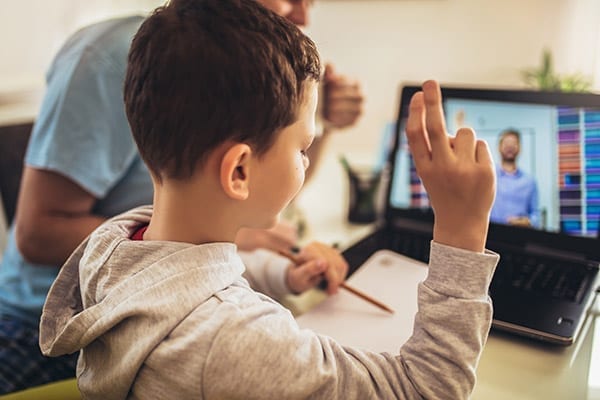
5 Tips to Building Relationships in the Virtual Classroom
Help teachers continue to connect with students despite the distance between them.
Topics: Pandemic Leadership, Innovation, Teacher Effectiveness
Learning is a social endeavor. In day-to-day classroom activities, teachers interact and connect with students. They hold students accountable for their attendance and classwork and motivate them to achieve at their highest levels. These strategies—and the relationships that develop as a result of these interactions—have a profound impact on student learning.
While it is impossible to recreate the exact conditions of a physical classroom when teaching online, teachers can continue to connect with students despite the distance between them. Here are a few ways to maintain strong relationships and support students’ needs in the virtual classroom.
Connect often and use multiple forms of communication
In a typical classroom, students are used to seeing, hearing, and talking with the teacher every day. Shifting to online learning can be an abrupt and difficult change. Students need to feel that their teachers are still “there” for them. Communicating frequently with students can help ease this transition.
Of course, there is more to connecting than simply sending a string of blanket emails, which can feel impersonal and even detract from existing relationships. To increase student engagement in a virtual setting, communicate in a variety of ways (e.g., emails, texts, group messaging, video or screen-casting) and allow students to communicate in a way that is comfortable for them. In many districts, video conferencing is quickly becoming the expectation rather than the exception. A key benefit is that this technology allows for much greater nonverbal communication, which can be particularly helpful with students who might be struggling.
Set virtual classroom hours
Set specific times for when to be online and accessible to individual students or groups. Setting these times not only increases efficiency, but it provides reassurance that students can regularly reach out for help when they need it.
Virtual classroom hours are also a way to check in on students’ emotional well-being in addition to their academic needs. While they might sign up to request academic support, it is often during these times that they will share other information that is important to them.
Here are a few points to consider when setting up virtual classroom hours:
- How often will you hold virtual classroom hours?
- Will you offer one time slot where students can contact you on a first-come, first-served basis? Or will you create multiple time slots within that period and ask students to sign up for individual times?
- How will students sign up for individual time slots?
- How will students reach you during virtual classroom hours?
- Are all students required to attend each week, or is it optional?
Check in with students individually
In addition to whole class and small group interactions, it can be helpful to connect with each student one-on-one at least weekly using the format that makes the most sense based on their resources (e.g., email, text, phone, or virtual chat). Just like in a physical classroom, students’ needs will vary over time. Watch for shifts in their academic performance or emotional states. Seek out those who miss assignments or go “dark,” and don’t allow them to fall through the cracks. Video communication tools, in particular, can often provide insight into a student’s emotional state by allowing for both verbal and nonverbal communication.
Communicate with parents
While parents want the best for their children, they might not observe the things a teacher sees in a learning setting. Likewise, parents will observe things that the teacher does not see outside of the virtual classroom. During this challenging time with the COVID-19 pandemic, students might be having difficulty with something that is unrelated to school but is affecting their work or their emotional state while they’re trying to learn. If concerns arise, proactively reach out to parents or caregivers to discuss and collaborate on potential responses. Having virtual classroom hours for parents, too, can be a good way to keep them engaged and involved.
Virtual relationships matter
Relationships matter as much in the virtual learning space as they do in the physical classroom. While schools are closed, students may have an even greater need for social interaction and social-emotional support. Intentionally connecting with students may require extra effort in the virtual classroom, but it is worthwhile. Maintaining positive connections not only helps students gain the most they can from instruction in a distance learning environment, but it can have a lasting impact when they do finally return to school.
Judy Zimny is vice president of the National Institute for STEM Education.

